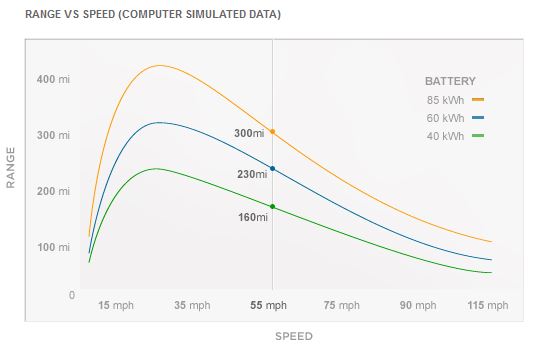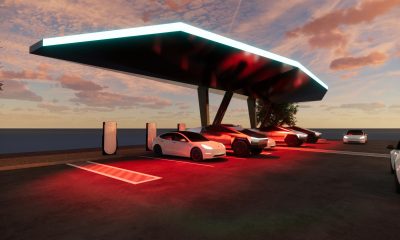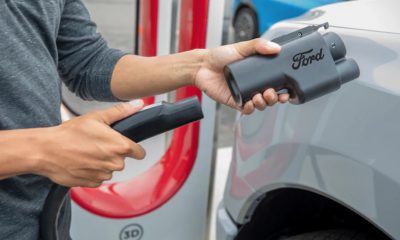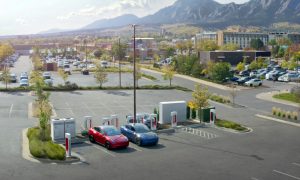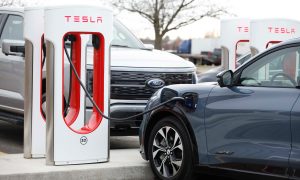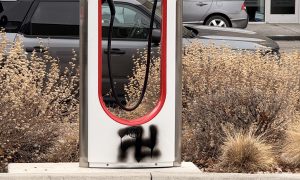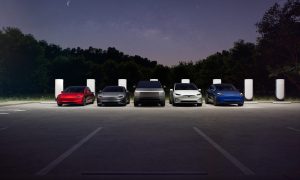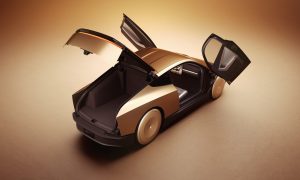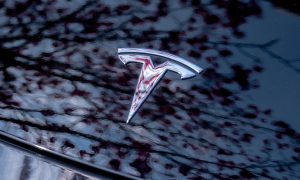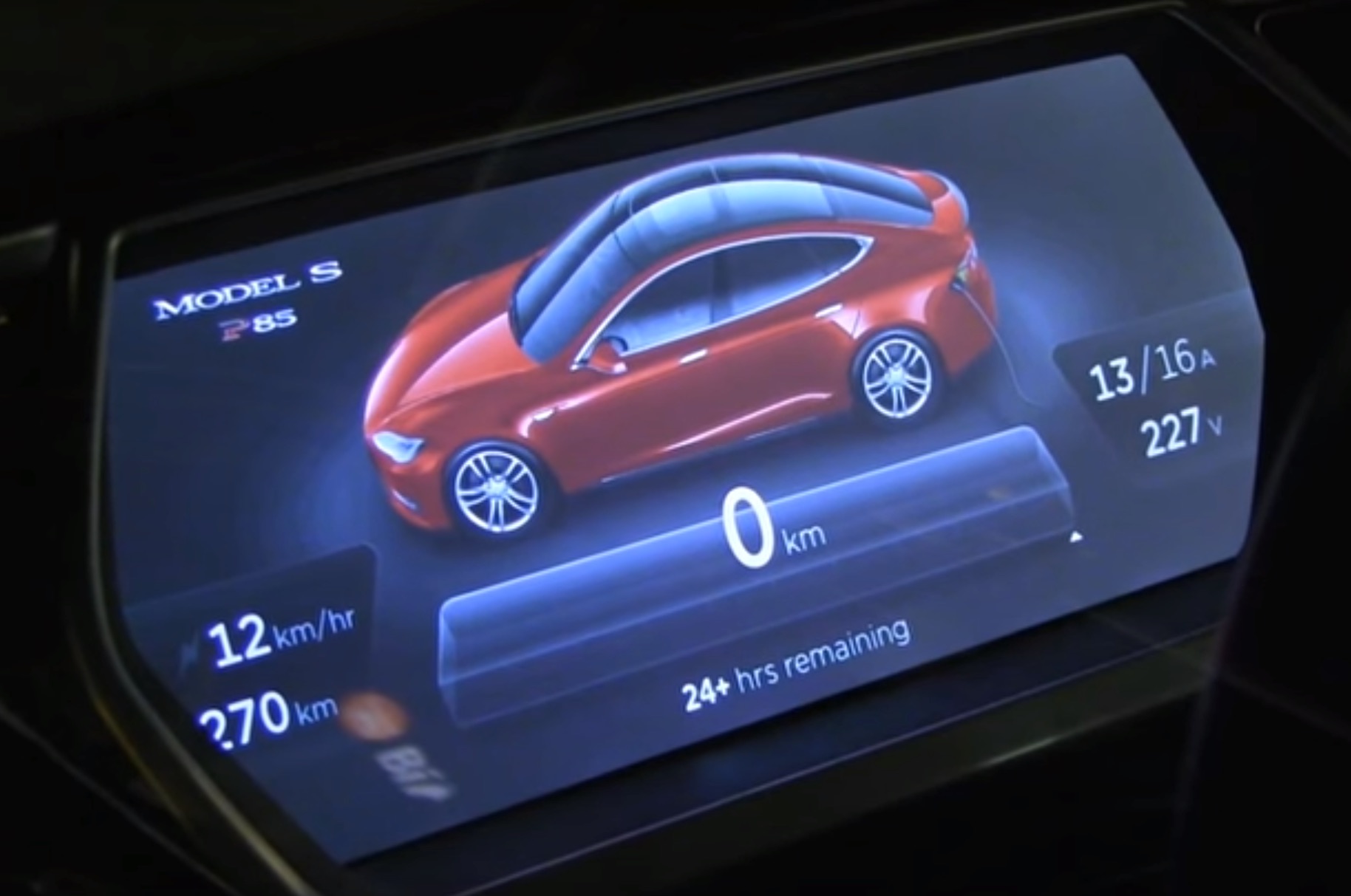

Firmware
What happens when you completely run out of battery in your Tesla Model S?
Updated Jan 2, 2016: Since this story was originally published, there’s been several Tesla firmware updates that presumably have altered the behavior of the Tesla battery pack. In specific, providing a “buffer mileage” after the battery runs down to 0 mi/km of range. When we originally experienced running out of battery under Firmware 5.9 as indicated by the “0” miles left on the instrument cluster, the Model S continued to travel for another 10 – 20 miles.
The most recent video by Bjørn Nyland under Firmware 7.0 seems to show that 0 means 0, or almost. Bjørn’s video suggests that the Model S came to a stop after the vehicle reached 0 km of range, however after an hour’s worth of charging under 13A, the vehicle was able to regain enough energy to continue driving despite the cluster still reading “0 km” (starting at 3:25 min of the video).
There’s been reports from Tesla owners that “balancing” the battery pack will help Tesla’s algorithms calibrate an absolute zero for the vehicle, though representatives from Tesla have said in the past that “‘pack balancing’ is not really necessary“.
Photo credit: Bjørn Nyland via YouTube
——————————————————–
Original story from May 15, 2014
So it’s the question everyone seems to want to ask following our recent Tesla racing story where we made a small mention that we … ahem, got stranded on the side of the road with no battery range left. How does one possibly run out of power in an 85 kWh Tesla Model S rated for 260 miles of range?
I’m sure some of you would suggest that the headline to this story should read “Only dummies run out of battery in their Tesla Model S”, especially considering Model S owners have done record breaking 12,000 mile journeys across four corners of the nation, not to mention that one Model S owner even crossed the country, and back, in a 60 kWh version.
We’ve received a lot of questions via emails, comments and even through media coverage on the topic, despite the story’s main intent of showcasing our Las Vegas Motor Speedway racing conquests, so we’ll go ahead and try to address them all here.
Battery Range and Trip Planning
The Tesla Model S provides you with a read out on the range (in miles or km) that’s remaining given the battery’s current state of charge. The rated range is formulaic and based on Tesla’s proprietary algorithms which attempt to estimate range by determining how much energy is stored in the battery. As its label implies, it’s truly just a rating.
Also see: Tesla Battery Range Degradation
Tesla’s rated range does not account for elevation changes or wind conditions. We find the site EVTripPlanner does an excellent job with estimating power consumption by taking into account speed, climate control usage and elevation changes.
This graph shows the correlation of speed with available driving range. The slower you travel, the less amount of air drag and therefore the more range you’ll be able to squeeze out of your Tesla.
That said, there are factors you can’t predict upfront, such as wind conditions. While not a big concern in most cases, it should be taken seriously in areas that are prone to high wind conditions and strong gusts. A strong head wind can almost double the Model S power requirements. Even slowing down does not render a substantial improvement. With that in mind, get as much extra charge as possible and drive extra conservative well before crossing into high wind territory. It’s easy for us to say that now having just learned from our Las Vegas to Barstow experience.
So how did you run out of battery?
I wish I could tell you that it was due to an act of heroism where by we veered our Model S off the freeway and onto a narrow dirt road, in pursuit of a big-headed green Martian that needed our help getting back to its space transporter. After all, we’re driving an Intergalactic SpaceBoat of Light and Wonder so it would only make sense that we assisted.
Unfortunately the truth is far less mind blowing.
We ran out of charge because we severely underestimated the strength of the wind and didn’t leave enough buffer early into the drive to account for these unforeseen weather conditions.
We left the Las Vegas Tesla Supercharger with approximately 240 miles in range thinking it would be more than enough power to reach the Barstow Supercharger station that was 160 miles away.
A sand storm with strong headwinds of 35 mph, combined with the steep elevation changes and our usual keeping-up-with-traffic speed of 75 mph, well before reaching the sand storm, all culminated into one of the most stressful situations we’ve ever experienced in our Tesla Model S. We ended up 3 miles shy of reaching our destination, taking into account the additional 10 – 20 miles of reserve range that we were able to tap into. This equates to an additional power consumption of roughly 60%.
Once the reserve is depleted, the next event is a message that displays across the center console indicating that the car is shutting down, pull over safely. Needless to say you should do this immediately.
Like the Terminator, this is still not the end. The car will have enough battery to power the displays and other auxiliary functions, followed by the final-final stage that occurs approximately half an hour later. Everything will shut down. You'll be able to open the doors and the emergency lights will continue flashing, but both the center console and dashboard will be completely dark.
What should you do?
Should you find yourself in this situation, put the car into the Tow Mode before everything begins shutting down. Make sure to block the wheels before putting the car into Tow Mode to prevent it from rolling off. The car will also need to be in neutral before it can be loaded onto a flatbed. Towing companies that work with Tesla know how to jumpstart the Model S battery, but you’ll save everyone time and energy by shifting the car into neutral before it’s completely dead.
Sorry.
Firmware
Tesla mobile app shows signs of upcoming FSD subscriptions
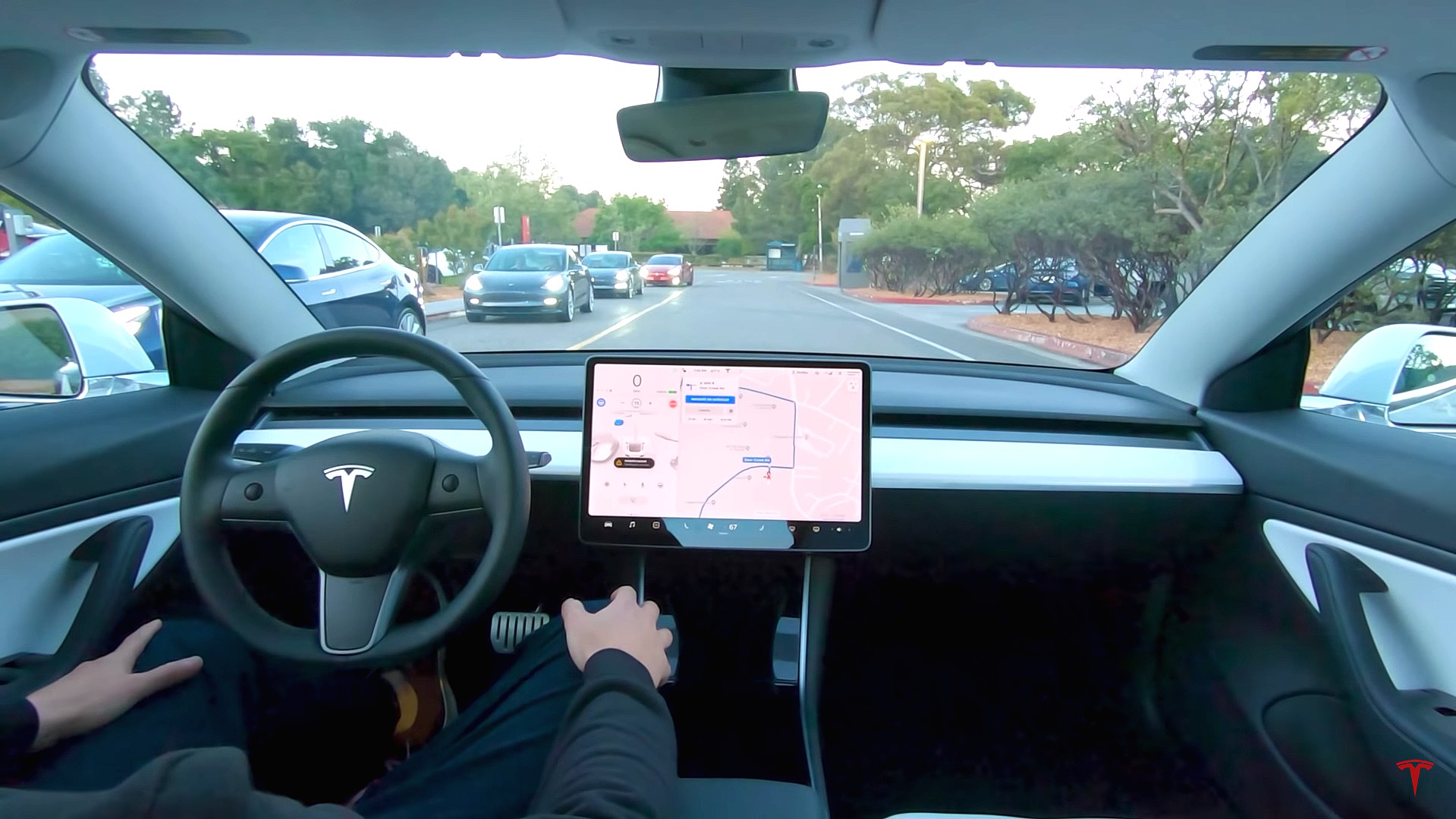
It appears that Tesla may be preparing to roll out some subscription-based services soon. Based on the observations of a Wales-based Model 3 owner who performed some reverse-engineering on the Tesla mobile app, it seems that the electric car maker has added a new “Subscribe” option beside the “Buy” option within the “Upgrades” tab, at least behind the scenes.
A screenshot of the new option was posted in the r/TeslaMotors subreddit, and while the Tesla owner in question, u/Callump01, admitted that the screenshot looks like something that could be easily fabricated, he did submit proof of his reverse-engineering to the community’s moderators. The moderators of the r/TeslaMotors subreddit confirmed the legitimacy of the Model 3 owner’s work, further suggesting that subscription options may indeed be coming to Tesla owners soon.
Did some reverse engineering on the app and Tesla looks to be preparing for subscriptions? from r/teslamotors
Tesla’s Full Self-Driving suite has been heavily speculated to be offered as a subscription option, similar to the company’s Premium Connectivity feature. And back in April, noted Tesla hacker @greentheonly stated that the company’s vehicles already had the source codes for a pay-as-you-go subscription model. The Tesla hacker suggested then that Tesla would likely release such a feature by the end of the year — something that Elon Musk also suggested in the first-quarter earnings call. “I think we will offer Full Self-Driving as a subscription service, but it will be probably towards the end of this year,” Musk stated.
While the signs for an upcoming FSD subscription option seem to be getting more and more prominent as the year approaches its final quarter, the details for such a feature are still quite slim. Pricing for FSD subscriptions, for example, have not been teased by Elon Musk yet, though he has stated on Twitter that purchasing the suite upfront would be more worth it in the long term. References to the feature in the vehicles’ source code, and now in the Tesla mobile app, also listed no references to pricing.
The idea of FSD subscriptions could prove quite popular among electric car owners, especially since it would allow budget-conscious customers to make the most out of the company’s driver-assist and self-driving systems without committing to the features’ full price. The current price of the Full Self-Driving suite is no joke, after all, being listed at $8,000 on top of a vehicle’s cost. By offering subscriptions to features like Navigate on Autopilot with automatic lane changes, owners could gain access to advanced functions only as they are needed.
Elon Musk, for his part, has explained that ultimately, he still believes that purchasing the Full Self-Driving suite outright provides the most value to customers, as it is an investment that would pay off in the future. “I should say, it will still make sense to buy FSD as an option as in our view, buying FSD is an investment in the future. And we are confident that it is an investment that will pay off to the consumer – to the benefit of the consumer.” Musk said.
Firmware
Tesla rolls out speed limit sign recognition and green traffic light alert in new update
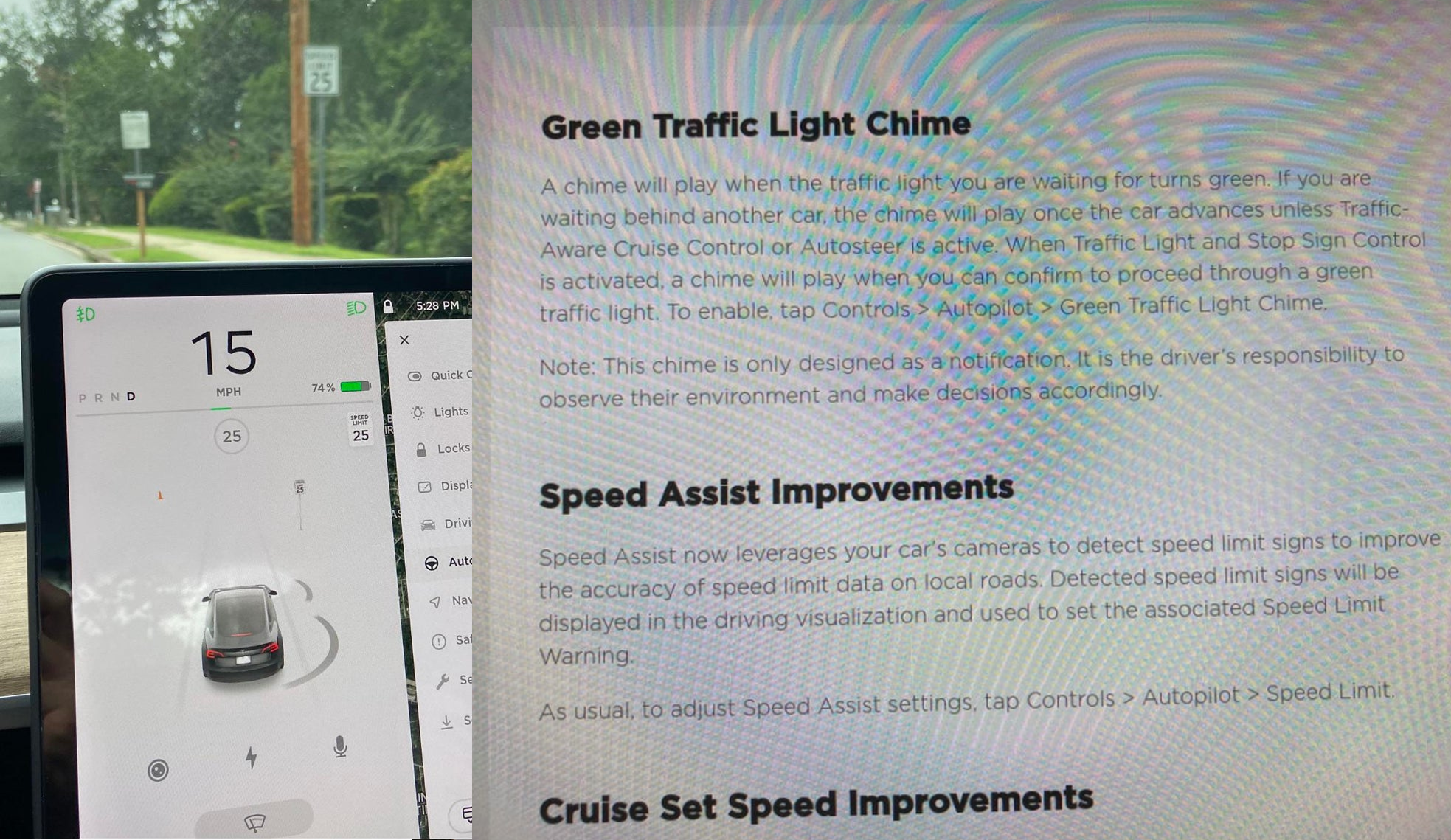
Tesla has started rolling out update 2020.36 this weekend, introducing a couple of notable new features for its vehicles. While there are only a few handful of vehicles that have reportedly received the update so far, 2020.36 makes it evident that the electric car maker has made some strides in its efforts to refine its driver-assist systems for inner-city driving.
Tesla is currently hard at work developing key features for its Full Self-Driving suite, which should allow vehicles to navigate through inner-city streets without driver input. Tesla’s FSD suite is still a work in progress, though the company has released the initial iterations of key features such Traffic Light and Stop Sign Control, which was introduced last April. Similar to the first release of Navigate on Autopilot, however, the capabilities of Traffic Light and Stop Sign Control were pretty basic during their initial rollout.
2020.36 Showing Speed Limit Signs in Visualization from r/teslamotors
With the release of update 2020.36, Tesla has rolled out some improvements that should allow its vehicles to handle traffic lights better. What’s more, the update also includes a particularly useful feature that enables better recognition of speed limit signs, which should make Autopilot’s speed adjustments better during use. Following are the Release Notes for these two new features.
Green Traffic Light Chime
“A chime will play when the traffic light you are waiting for turns green. If you are waiting behind another car, the chime will play once the car advances unless Traffic-Aware Cruise Control or Autosteer is active. When Traffic Light and Stop Sign Control is activated, a chime will play when you can confirm to proceed through a green traffic light. To enable, tap Controls > Autopilot > Green Traffic Light Chime.
“Note: This chime is only designed as a notification. It is the driver’s responsibility to observe their environment and make decisions accordingly.”
Speed Assist Improvements
“Speed Assist now leverages your car’s cameras to detect speed limit signs to improve the accuracy of speed limit data on local roads. Detected speed limit signs will be displayed in the driving visualization and used to set the associated Speed Limit Warning.
“As usual, to adjust Speed Assist settings, tap Controls > Autopilot > Speed Limit.”
Footage of the new green light chime in action via @NASA8500 on Twitter ✈️ from r/teslamotors
Amidst the rollout of 2020.36’s new features, speculations were abounding among Tesla community members that this update may include the first pieces of the company’s highly-anticipated Autopilot rewrite. Inasmuch as the idea is exciting, however, Tesla CEO Elon Musk has stated that this was not the case. While responding to a Tesla owner who asked if the Autopilot rewrite is in “shadow mode” in 2020.36, Musk responded “Not yet.”
Firmware
Tesla rolls out Sirius XM free three-month subscription
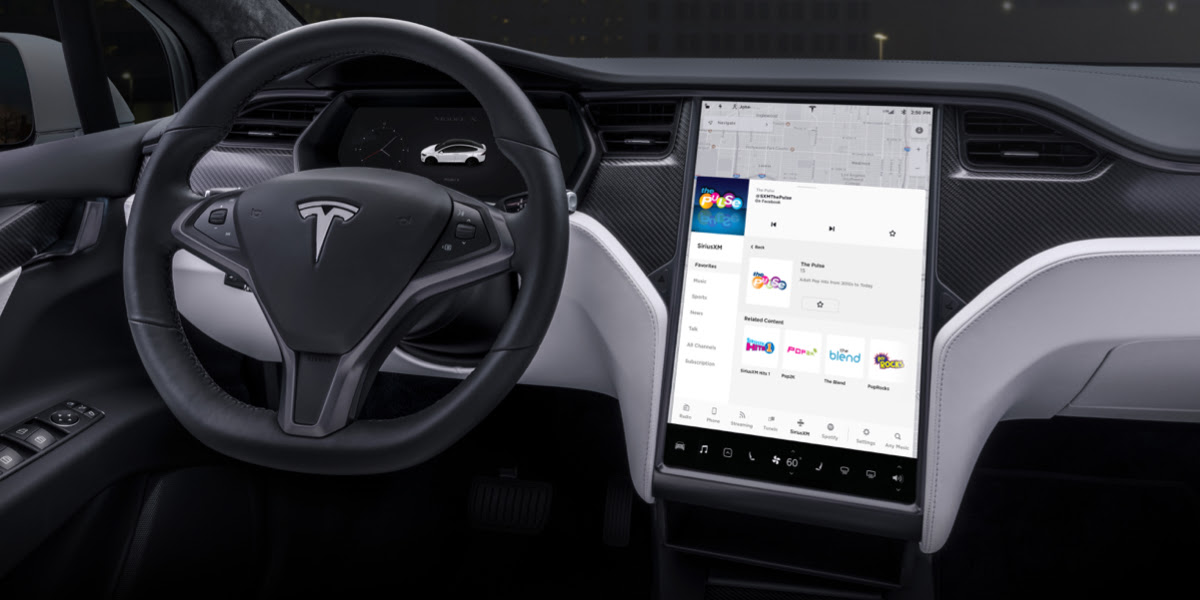
Tesla has rolled out a free three-month trial subscription to Sirius XM, in what appears to be the company’s latest push into making its vehicles’ entertainment systems more feature-rich. The new Sirius XM offer will likely be appreciated by owners of the company’s vehicles, especially considering that the service is among the most popular satellite radios in the country today.
Tesla announced its new offer in an email sent on Monday. An image that accompanied the communication also teased Tesla’s updated and optimized Sirius XM UI for its vehicles. Following is the email’s text.
“Beginning now, enjoy a free, All Access three-month trial subscription to Sirius XM, plus a completely new look and improved functionality. Our latest over-the-air software update includes significant improvements to overall Sirius XM navigation, organization, and search features, including access to more than 150 satellite channels.
“To access simply tap the Sirius XM app from the ‘Music’ section of your in-car center touchscreen—or enjoy your subscription online, on your phone, or at home on connected devices. If you can’t hear SiriusXM channels in your car, select the Sirius XM ‘Subscription’ tab for instruction on how to refresh your audio.”
Tesla has actually been working on Sirius XM improvements for some time now. Back in June, for example, Tesla rolled out its 2020.24.6.4 update, and it included some optimizations to its Model S and Model X’s Sirius XM interface. As noted by noted Tesla owner and hacker @greentheonly, the source code of this update revealed that the Sirius XM optimizations were also intended to be released to other areas such as Canada.
Interestingly enough, Sirius XM is a popular feature that has been exclusive to the Model S and X. Tesla’s most popular vehicle to date, the Model 3, is yet to receive the feature. One could only hope that Sirius XM integration to the Model 3 may eventually be included in the future. Such an update would most definitely be appreciated by the EV community, especially since some Model 3 owners have resorted to using their smartphones or third-party solutions to gain access to the satellite radio service.
The fact that Tesla seems to be pushing Sirius XM rather assertively to its customers seems to suggest that the company may be poised to roll out more entertainment-based apps in the coming months. Apps such as Sirius XM, Spotify, Netflix, and YouTube, may seem quite minor when compared to key functions like Autopilot, after all, but they do help round out the ownership experience of Tesla owners. In a way, Sirius XM does make sense for Tesla’s next-generation of vehicles, especially the Cybertruck and the Semi, both of which would likely be driven in areas that lack LTE connectivity.

